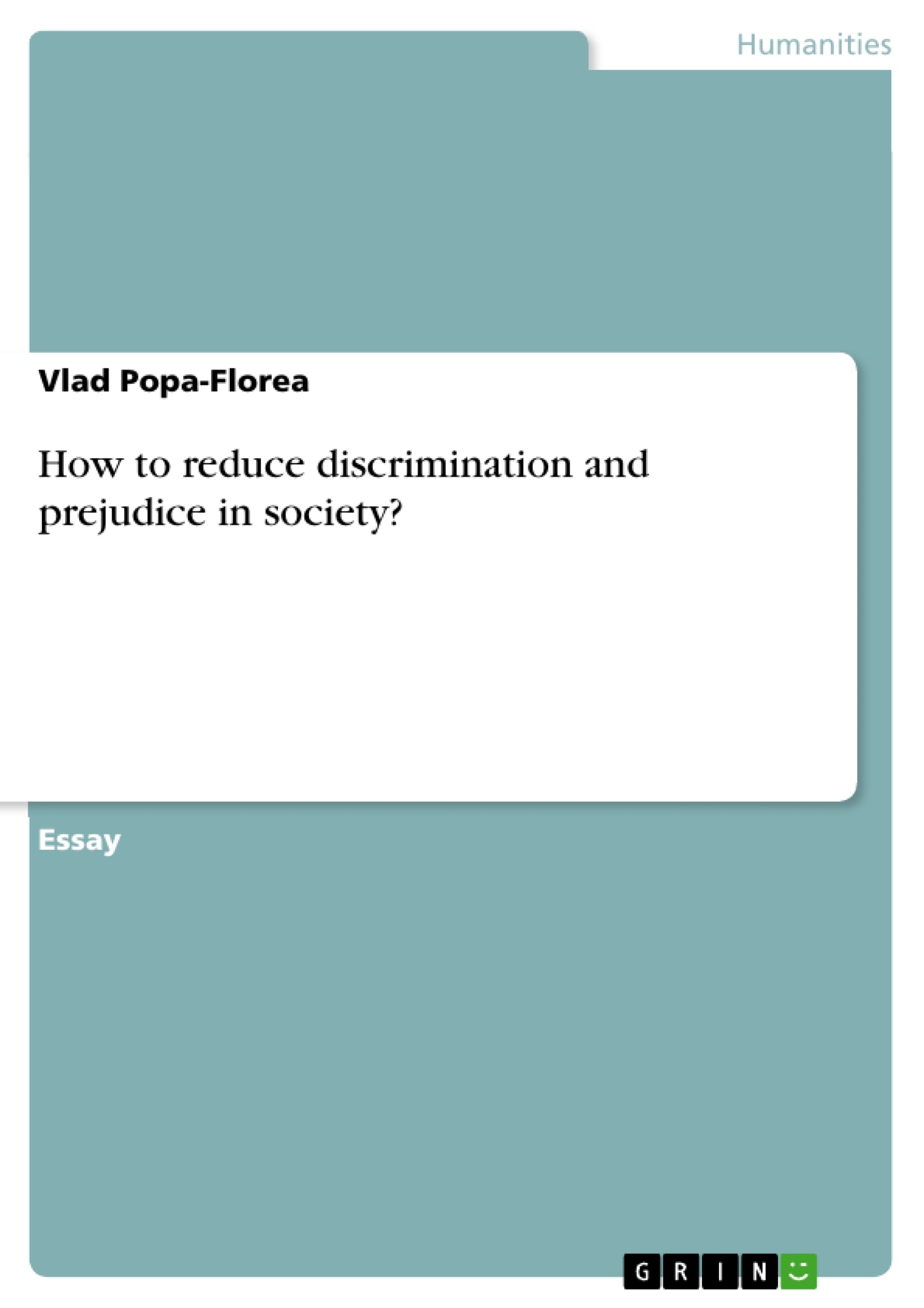Nowadays, the world is becoming more globalized, interconnected and heterogeneous. People can no longer interact just with their own type or race, but, on the contrary, must embrace the diversity that surrounds them.
However, as human beings live in groups and act all together as a group, this life style also develops an alternative side of stereotypes, prejudice and discrimination. Stereotypes are related to the cognitive aspect of perception over people, thus defined as beliefs and conceptions on the behavior of different groups.
This paper will evaluate and discuss methods through which an individual person can reduce prejudice and discrimination in society. It will offer theoretical background and empirical evidence, along with certain limitations that restrain the reduction methods.
Table of Contents
- Introduction
- Stereotype Suppression
- Self-Regulation Model (SRM)
- Imagined contact
- Conclusion
Objectives and Key Themes
This paper examines and discusses methods individuals can employ to reduce prejudice and discrimination in society. The paper provides theoretical background, empirical evidence, and highlights limitations associated with these methods.
- The cognitive and behavioral aspects of stereotypes, prejudice, and discrimination.
- Methods for reducing prejudice at the individual level, including stereotype suppression, self-regulation, and imagined contact.
- The effectiveness and limitations of these methods.
- The role of social norms and individual motivation in reducing prejudice.
- The impact of prejudice reduction on intergroup relations and societal harmony.
Chapter Summaries
- Introduction: This chapter introduces the concepts of stereotypes, prejudice, and discrimination, highlighting the importance of reducing these constructs in a globalized world. It emphasizes the focus on individual-level solutions for mitigating prejudice.
- Stereotype Suppression: This chapter delves into the process of stereotype suppression, explaining how individuals consciously attempt to suppress biased thoughts. It discusses the "rebound effect" where suppressing stereotypes can lead to an even stronger return of those thoughts. This section also explores factors influencing the effectiveness of stereotype suppression, such as individual prejudice levels and social norms.
- Self-Regulation Model (SRM): This chapter presents the self-regulation model of prejudice, which focuses on how individuals develop internal cues to control their prejudiced responses. The SRM explains how repeated self-regulatory acts lead to automatic and unconscious control of prejudiced behavior over time. The chapter also discusses the potential drawbacks of the model, including cognitive depletion and the possibility of reverse effects.
- Imagined Contact: This chapter introduces the concept of imagined contact, a method of reducing prejudice by mentally simulating positive intergroup interactions. It explores the theoretical underpinnings and empirical evidence supporting the effectiveness of imagined contact. This section also examines the limitations of this approach, including potential pre-existing positive attitudes and the need for further research.
Keywords
This paper explores the complex dynamics of prejudice and discrimination, focusing on individual-level interventions. Key concepts include stereotype suppression, self-regulation, imagined contact, rebound effect, social norms, intergroup attitudes, and the impact of individual actions on societal prejudice.
- Quote paper
- Vlad Popa-Florea (Author), 2012, How to reduce discrimination and prejudice in society?, Munich, GRIN Verlag, https://www.grin.com/document/313911



